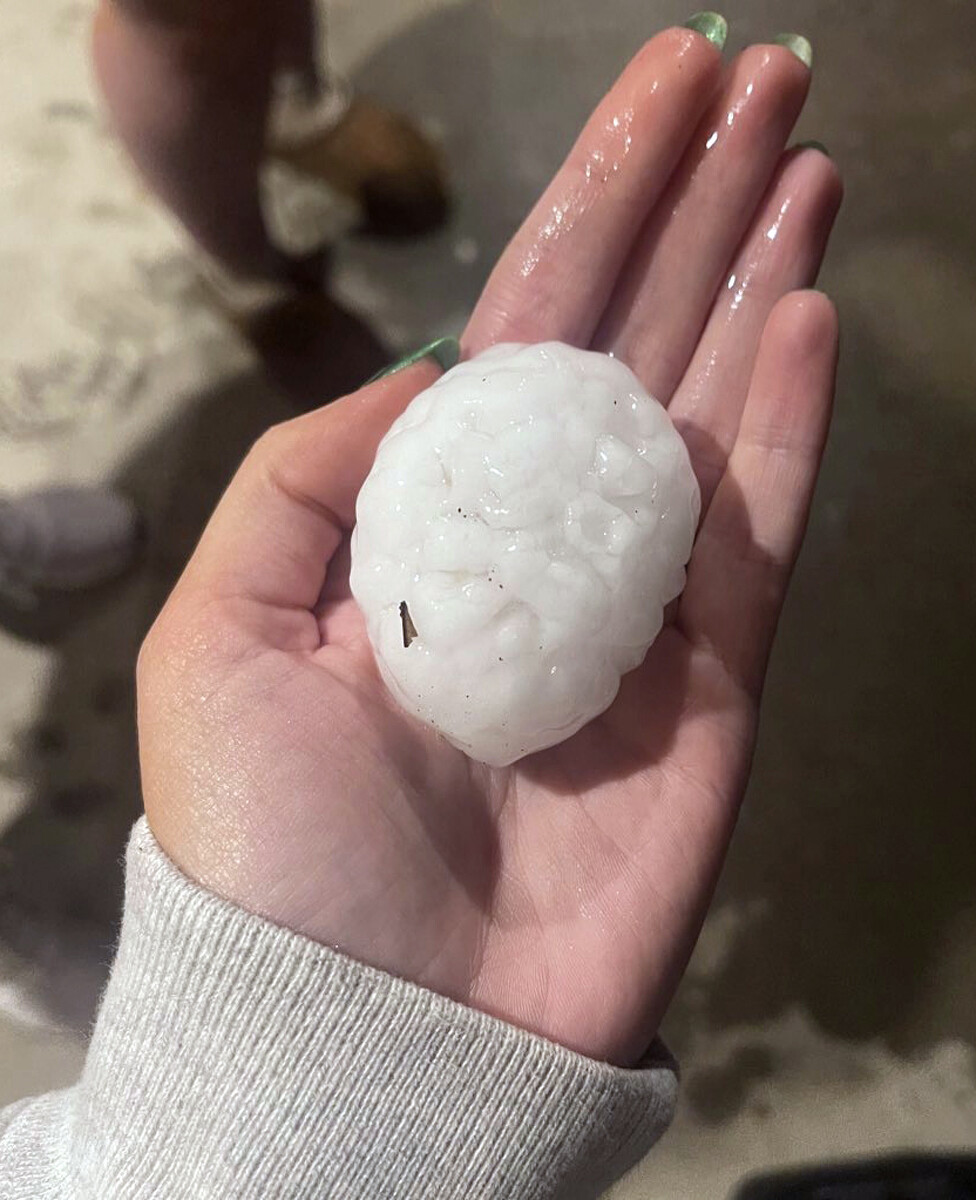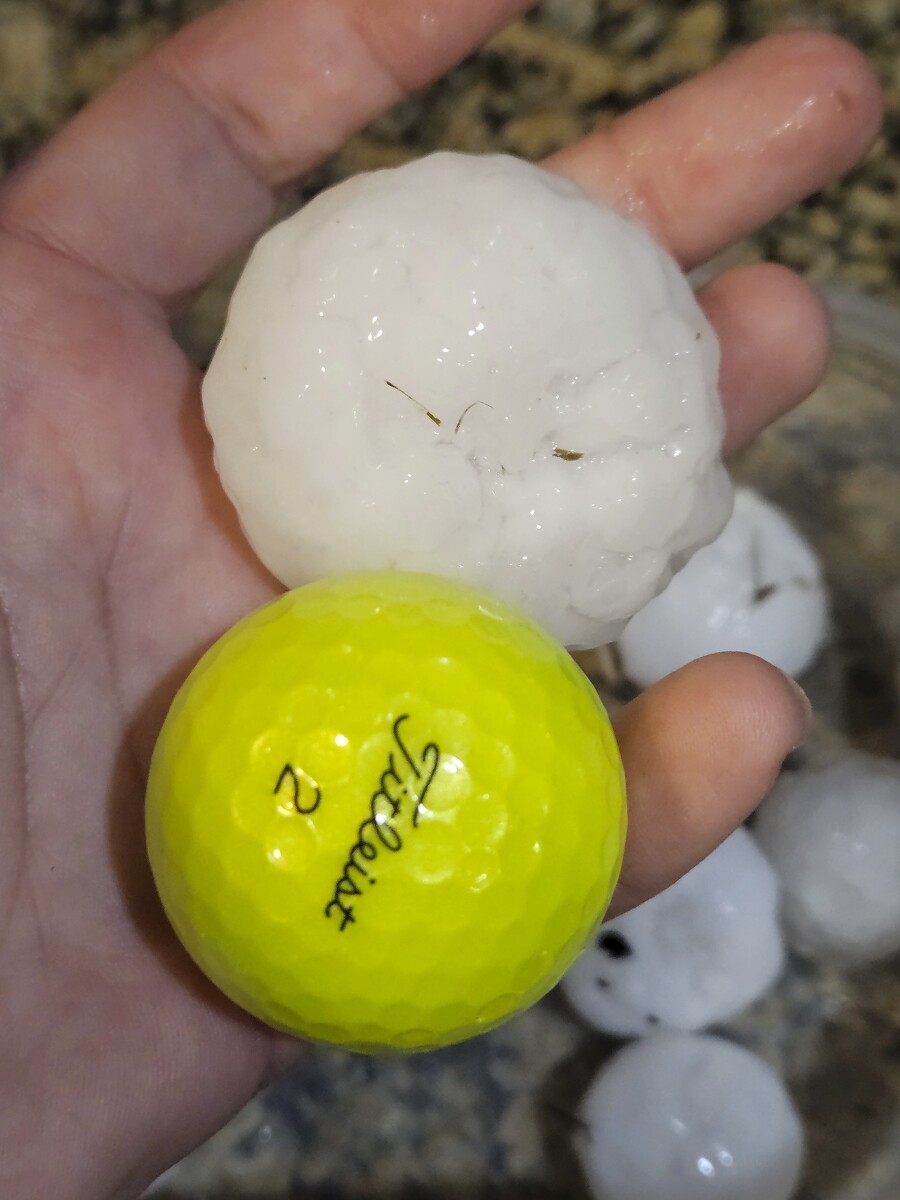
In this image provided by Jeremy Crabtree, large chunks of hail are shown, Wednesday night, March 13, 2024, in Shawnee, Kan. Volatile weather was honing in on parts of Kansas and Missouri Wednesday night, with some storms bringing massive chunks of hail. (Jeremy Crabtree via AP)
Intense storms swept through Kansas and Missouri last week and brought whipping winds, possible tornadoes, and what some described as "gorilla hail."
In Kansas, hail nearly the size of a softball and measuring 4 inches (10 centimeters) was reported in the town of Wabaunsee and 3-inch (7.6-centimeter) hail was reported in Geary County near Junction City and Fort Riley.
Here are some facts about hail according to the National Weather Service:
Hail is a type of frozen precipitation that forms during thunderstorms, typically in the spring and summer months in the U.S.
Strong updrafts, which is the upward flow of air in a thunderstorm, carry up very small particles called ice nuclei that water freezes onto when it passes the freezing level in the atmosphere.
Small ice balls start forming and as they try fall towards the Earth's surface, they can get tossed back up to the top of the storm by another updraft. Each trip above and below freezing adds another layer of ice until the hail becomes heavy enough to fall down to Earth.
The size of hail varies and can be as small as a penny or larger than apples due to varying updraft strengths said Mark Fuchs, senior service hydrologist at the National Weather Service in St. Louis, Missouri.
"The stronger the updraft, the larger the hail can be ... anything bigger than two inches is really big," said Fuchs.

In this image provided by Jeremy Crabtree, large chunks of hail are shown, Wednesday night, March 13, 2024, in Shawnee, Kan. Volatile weather was honing in on parts of Kansas and Missouri Wednesday night, with some storms bringing massive chunks of hail. (Jeremy Crabtree via AP)
Pea: ¼ inch
Mothball: ½ inch
Penny: ¾ inch
Nickel: 7/8 inch
Quarter: 1 inch (hail at least quarter size is considered severe)
Ping Pong ball: 1½ inch
Golf ball: 1¾ inch
Tennis ball: 2½ inches
Baseball: 2¾ inches
Large apple: 3 inches
Softball: 4 inches
Grapefruit: 4½ inches
The largest recorded hailstone in the U.S. was nearly as big as a volleyball and fell on July 23, 2010, in Vivian, South Dakota. It was 8 inches in diameter and weighed almost 2 pounds.
Hail causes about $1 billion damage to crops and property annually. A hailstorm that hit Kansas City on April 10, 2001, was the costliest ever in the U.S., causing about $2 billion damage.

In this image provided by Randy Smith, a large chunk of hail is compared to the size of a golf ball, Wednesday night, March 13, 2024, in Shawnee, Kan. Volatile weather was honing in on parts of Kansas and Missouri Wednesday night, with some storms bringing massive chunks of hail. (Randy Smith via AP)